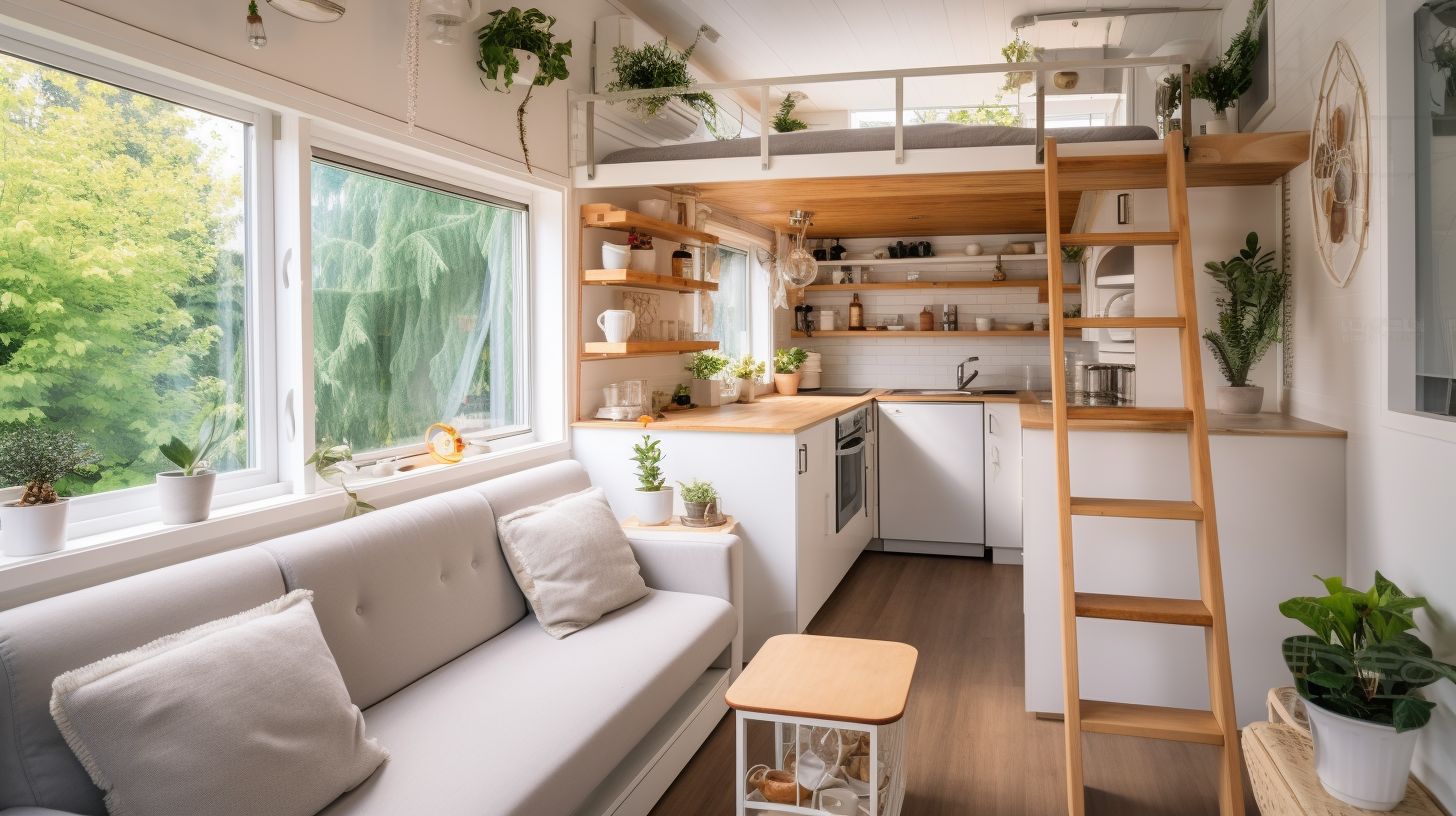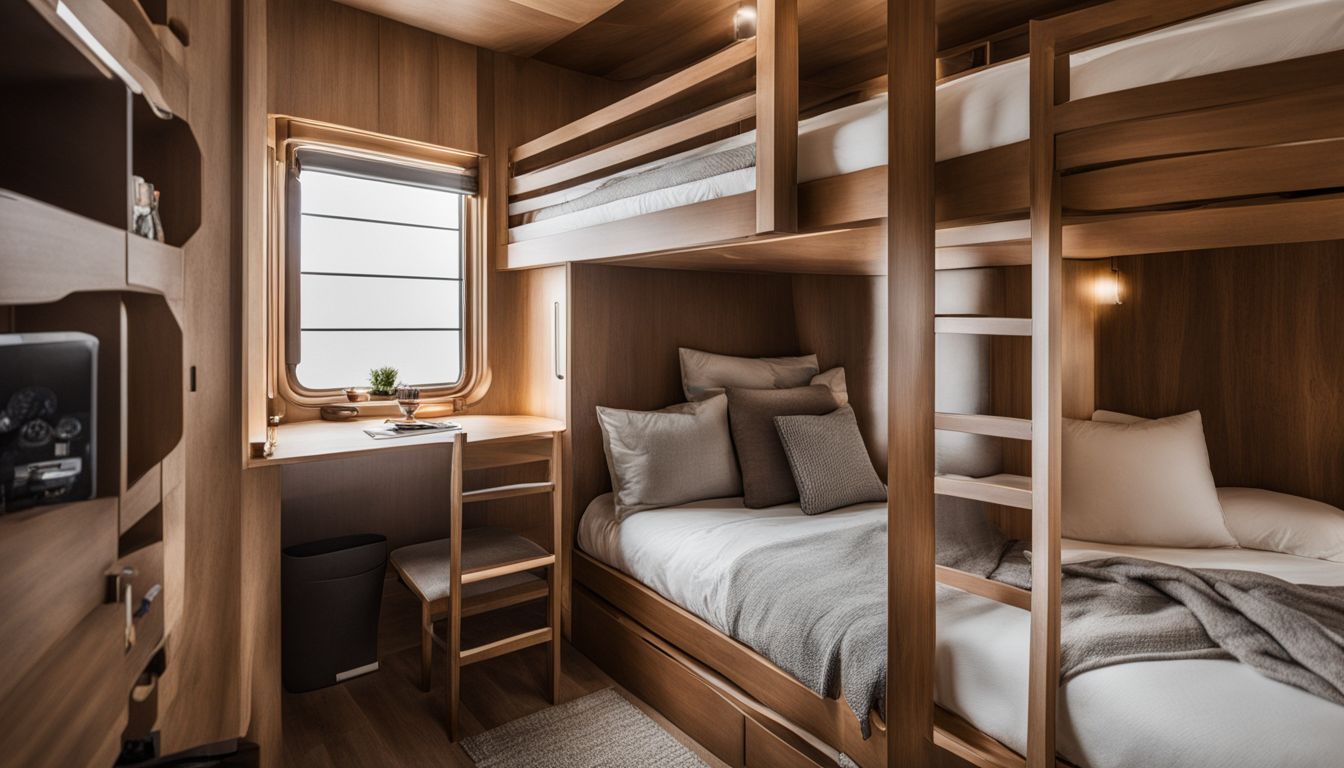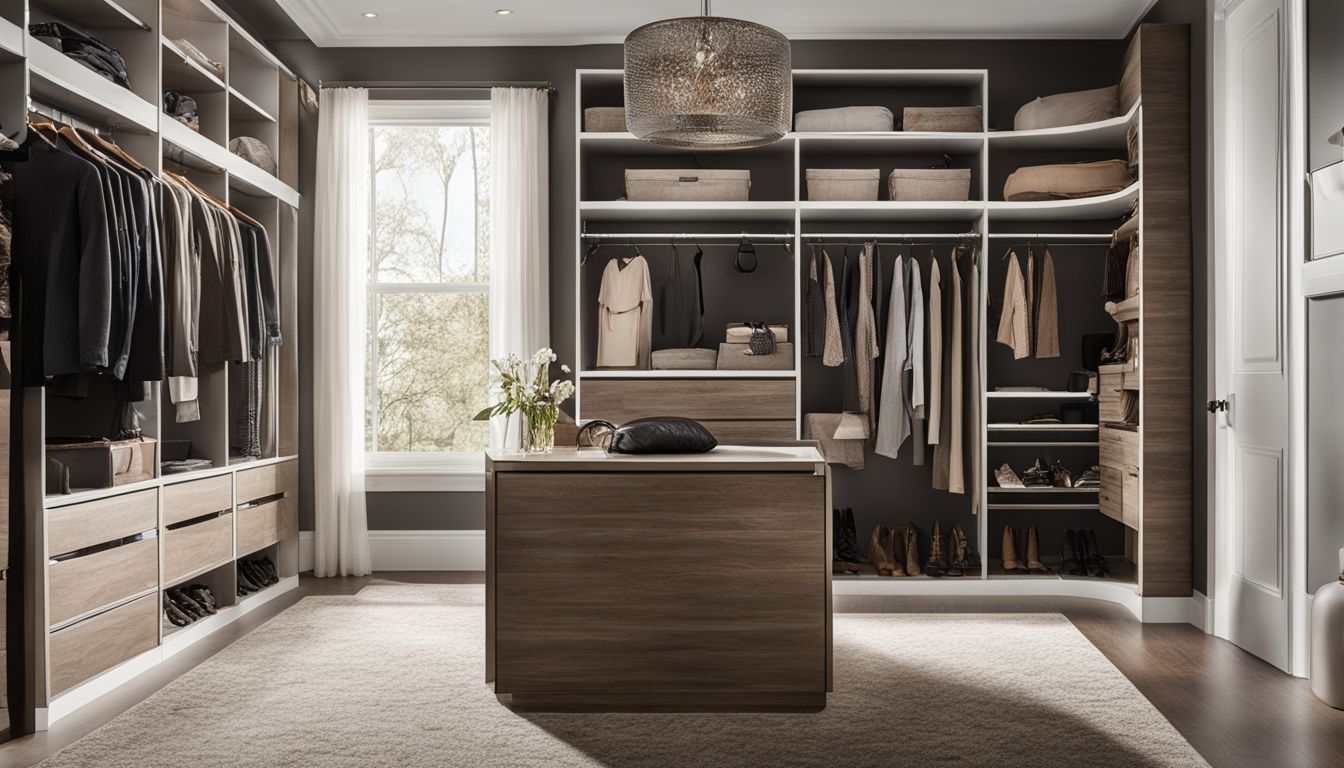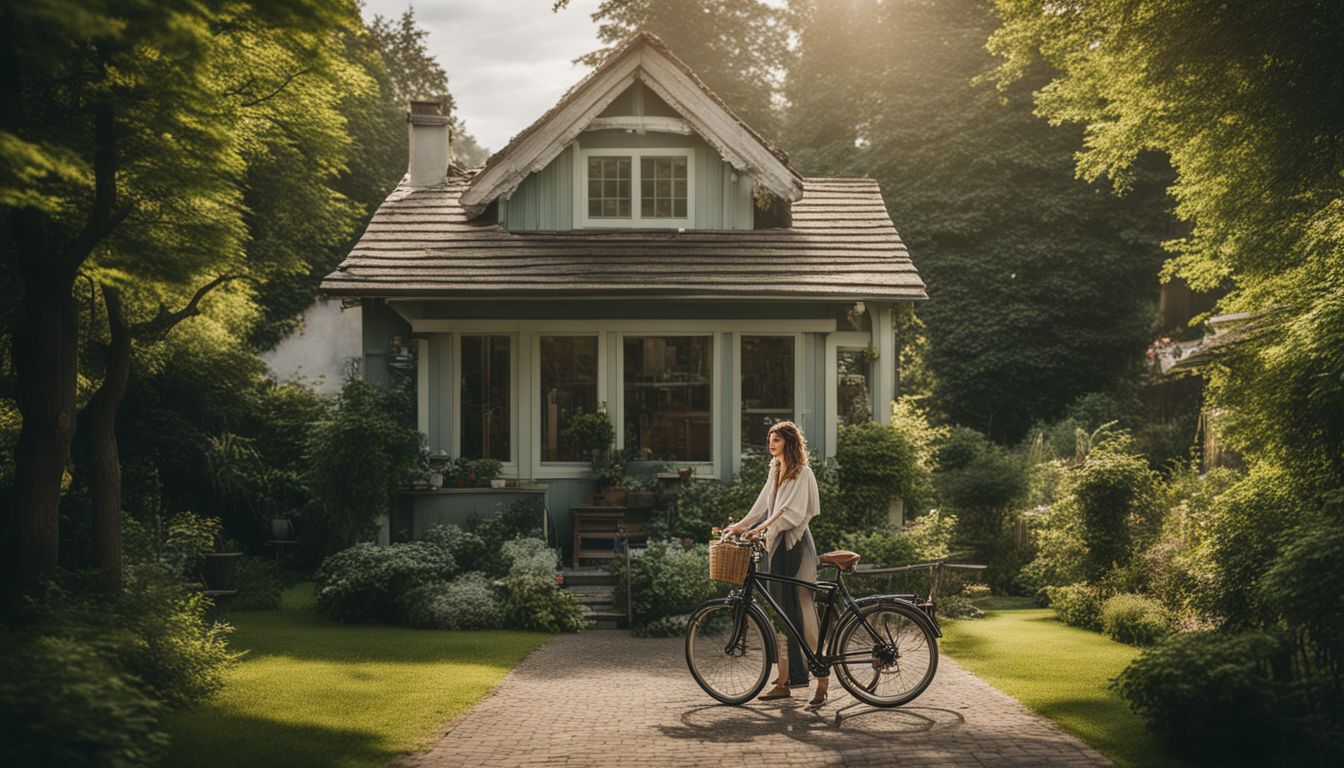
Living with a large family in a small house can often feel like you’re trying to fit puzzle pieces that just don’t match. In fact, our family of eight downsized from a 5-bedroom home to a 3-bedroom one.
This article will guide you through practical tips and creative strategies, turning your cramped space into a cozy haven for all members. Ready for the transformation? Let’s dive in!
Key Takeaways
- Creative bedroom arrangements, such as bunk beds or loft beds, can help maximize space in a small house for a large family.
- Functional bathroom designs, like using the space under the sink and having towel racks on walls, can make a small bathroom work well for a big family.
- Smart storage solutions, including creating vertical space with shelves and utilizing furniture with built-in storage, are key to maximizing the use of space in a small house for a large family.
Maximizing Space in Small Houses for Large Family

Maximizing space in a small house for a large family requires creative bedroom arrangements and functional bathroom designs.
Creative Bedroom Arrangements
We can use small bedrooms in many ways for a big family. One way is to have bunk beds or trundle beds in the children’s room. This means we can fit more than one child in each room. The oldest daughter has her own space with a full bed. This gives her some needed peace and quiet. Loft beds are another idea. They have a high bed with space underneath for a desk or play area.
Functional Bathroom Designs
Small houses can have great bathrooms, too. For a big family, here are some ideas:
- Make the most of your medicine cabinet. It’s an easy place to store small items like toothbrushes and band-aids.
- Use the space under the sink. Bins and baskets can hold towels and washcloths.
- Think about a floor-to-ceiling storage cabinet. They give lots of space for stuff like hair products.
- Have towel racks on the back of the bathroom door or on the walls. This frees up room in cabinets or drawers.
- Use hooks for bathrobes or large towels.
- Keep only what you need in the bathroom, and put extra items in hallway closets or other storage areas.
- Each kid can have their own toothbrush holder – it makes them feel special and keeps things tidy.
- A baby bathtub that folds up is perfect for homes with little ones.
- Try out shelves above the door or toilet – every bit of wall space helps!
- Put in a long dresser if there’s room – it gives plenty of storage for linens and extras.
Non-traditional Use of Rooms
Try new ways to use your rooms. Rooms can have many uses, not just the standard ones. For instance, you could turn a dining room into a schoolroom for home lessons! Small bedrooms also don’t need to be for sleeping only – one family used theirs as an office space for Dad’s work.
Be open and creative with how you use each space in your house. You may find surprising ways to make them fit your needs better. It all counts when living in a small house with a large family!
Smart Storage Solutions

Utilize efficient storage space, manage clothes storage effectively, and incorporate furniture with built-in storage to maximize the use of space in a small house for a large family.
Efficient Use of Storage Space
A small house can have ample storage with a bit of smart thinking.
- Create vertical space with shelves on walls.
- Under-bed storage containers help store toys and clothes neatly.
- Bins, baskets, and plastic stacks of drawers are great for kids’ rooms.
- Use dressers and closets to manage clothes storage effectively.
- Pack unused clothes by gender and size in boxes for hallway closets.
- Try built-in bookcases or recessed shelving in the dining area.
- The kitchen can make use of under-cabinet shelves for food items.
- Door-hanging organizers keep essentials at hand yet out of sight.
- Convert empty alcoves or under stairwells into handy storage spots.
Managing Clothes Storage
To manage clothes storage in a small house for a large family, you can use various strategies and storage solutions. Here’s how:
- Use bins, baskets, and plastic stacks of drawers to organize clothes. These containers can be placed in closets or under beds to maximize space.
- Divide clothes among dressers and hang them up in the closet. This allows for efficient and accessible storage.
- Box up additional clothes by gender and size and store them in the hallway closet. This keeps them organized and easy to find when needed.
- Utilize non-traditional bedrooms for managing clothes storage. Parlors, closets, alcoves, under stairwells, and partitioned rooms can all be used creatively to store clothes.
Furniture with Built-in Storage
The author’s downsized house has furniture with built-in storage. They utilize this type of furniture to maximize space in their small home. The built-in storage allows them to have a place to store their belongings without taking up additional floor space. It also helps them stay organized and decluttered, as they can easily hide away items that are not in use. This type of furniture is both functional and practical for a large family living in a small house.
Benefits of Living in a Small House

Living in a small house offers sustainable living, lower costs, and fosters close family bonds. Discover the advantages of downsizing and why it’s worth considering for your large family.
Sustainable Living
Sustainable living is an important aspect of making a small house work for a large family. By downsizing to a smaller house, families can reduce their carbon footprint and have a positive impact on the environment.
Additionally, utilizing smart storage solutions helps promote minimalism and reduces the need for excess belongings. Families can also be flexible with sleeping arrangements, such as having children share rooms or using non-traditional beds like bunk beds or loft beds.
These practices not only save space but also encourage a more sustainable lifestyle by embracing simplicity and reducing waste.
Lower Costs
Living in a small house can help lower costs for large families. With reduced housing expenses, such as rent or mortgage payments, families can save money and allocate it to other priorities.
Smaller houses also usually have lower utility costs due to less square footage, resulting in savings on electricity and water bills. By utilizing space-saving systems for storage and maximizing the available space, families can reduce the need for additional storage units or renting extra spaces.
Moreover, flexible sleeping arrangements like bunk beds or creative bedroom setups allow families to accommodate more children without requiring additional bedrooms. These cost-saving strategies enable large families to live comfortably within their means while still enjoying a close-knit living environment.
Fosters Close Family Bonds
Living in a small house can actually foster close family bonds. When space is limited, family members are more likely to spend time together and interact with each other. There are fewer distractions, and everyone is forced to be in closer proximity, which encourages communication and connection.
Family members may need to share bedrooms or common spaces, which promotes cooperation and compromise. This shared living experience can create stronger relationships among family members as they learn to navigate the challenges of living in a small space together.
By prioritizing quality time spent together, the family grows closer and builds lasting bonds that will benefit them in the long run.
Conclusion

In conclusion, making a small house work for a large family is all about maximizing space and finding smart storage solutions. By being creative with bedroom arrangements, using functional bathroom designs, and thinking outside the box when it comes to room use, families can make the most of their small homes.
The benefits of living in a small house include sustainable living, lower costs, and closer family bonds. So embrace simple living and enjoy the advantages of a cozy home that brings your family together.
FAQs
1. How can I make a small house work for a large family?
You can use creative storage solutions like command hooks, plastic tubs, and baskets on shelves to keep things tidy. You can also think outside the box, turning non-traditional spaces into bedrooms or schoolrooms.
2. Is it possible to fit all of my kids in one bedroom?
Yes! Children often prefer to be together. It’s about dividing your bedrooms wisely and maybe using partitioning off rooms or Ikea Billy shelves.
3. What can help maximize space in our bathrooms?
There are many ways you could increase bathroom functionality by using vertical storage, wall storage, long dressers or even transforming unused furniture into additional storage.
4. How do we store our clothes if we don’t have enough closet space?
Try storing clothes inside hallway closets with the help of Saatva mattresses that come equipped with under-bed drawers. You could also use locker-style spaces, benches with baskets, and cubbies to maximize your existing dresser space and wardrobes.
5. How do I create more sleeping areas for my large family?
With careful planning, you can accommodate several children using creative solutions like Murphy Beds, not forgetting some military families have actually transformed their garages as well!
6. My kitchen is very small but needs to cater meals for my big family – What should I do?
To maximize kitchen space, start by decluttering, then adopt simple living techniques such as re-organizing your counters, focus on smart usage of available drawer sizes, dishes stacked up, plus utilizing between-the-stud storages when necessary apart from renovating cupboards into bench-style cornered sitting arrangements.
